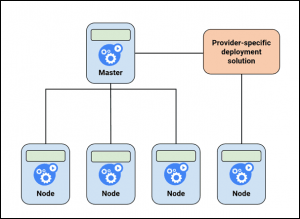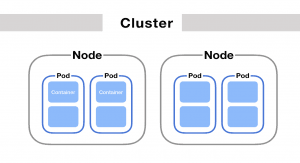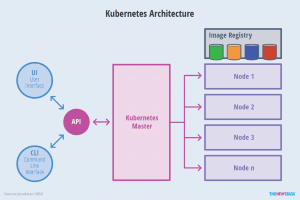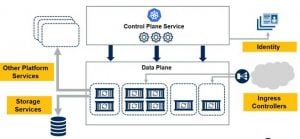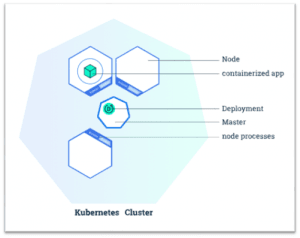It might not be the only option for container management, but it is the most popular.
It is considered one of the highest velocity in the history of open-source projects.
But what is it and how does it work? Why do you need it?
Once you do learn all the components to Kubernetes, you might be asking yourself, what do all these words mean? What do these things do?
First, the name Kubernetes spawned from the desire to be at the helm of everything.
To be the captain of the ship.
Which is what it technically means. It’s derived from the Greek word “helmsman” or “sailing master”. It is the master of container orchestration and its automation puts it at the head of everything: every application, every virtual machine.
Eliminating many of the outdated manual practices that might have been required in the past, Kubernetes deploys, and scales containerized applications faster than ever before.
And now the management of these containers has never been easier or more efficient.
To better understand Kubernetes and what it does, here is a list of terms to get you up to speed on what is involved.
These terms are the building blocks of Kubernetes.
Knowing what they are will better help you understand how they all work together.
The Nodes are either the physical or virtual machines on your cluster.
These machines do the work and hold what you need to run your containers.
The Clusters are each a bunch of nodes that run the containerized applications.
Kubernetes is what you use to manage the nodes in your cluster.
The API gives you that freedom to tell Kubernetes how you want things to run.
You are afforded this power and functionality through a RESTful interface and gives you the ability to store the cluster’s state.
The Control Plane is where the cool automated aspects of Kubernetes live.
It maintains a record of all the Objects in the system.
It runs continuous control loops to manage them.
The control plane is the checks and balances, continuously monitoring everything.
The Master maintains your cluster.
Because of this every cluster requires a master node as well as several “worker” nodes.
The master itself has three critical processes for managing the cluster: kube-apiserver, kube-controller-manager and kube-scheduler.
Every change made is through the master node instead of manually to every solitary node.
The Kubectl is the command line interface (CLI) for managing all operations in the clusters. It communicates directly to the API.
Now while the explanation of this is straightforward, it takes a fair amount of expertise to run it and to to be at the head of everything.
That’s why it is important to find a company you can trust that provides Kubernetes as a Service and can take control of what can be an overwhelming process in futility.
Let us help you out!

